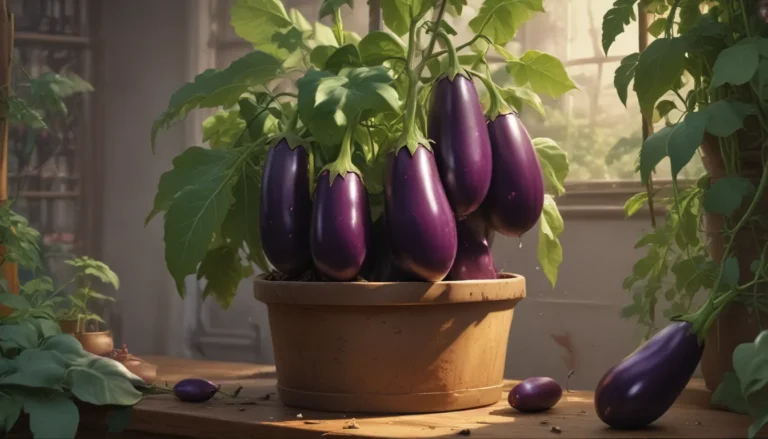Complete Guide to Harvesting Turnips: When, How, and More

So, your turnips are growing in the garden, and now you’re wondering when it’s time to harvest them. The process of harvesting turnips can be both exciting and rewarding, as you get to enjoy the fruits of your labor. In this comprehensive guide, we will delve into everything you need to know about harvesting turnips, from when to do it to how to store your harvest correctly. We will also share some mouth-watering recipes to make the most of this versatile vegetable. So, let’s dive right in!
What You Should Know
Before we jump into the specifics of harvesting turnips, it’s essential to understand a few key points. Turnips come in various varieties, each with its own unique qualities. The timing of harvest can vary based on the type of turnip you’re growing and your personal preferences. Some turnips are quick-growing and can be ready for harvest in just a few weeks, while others may take a bit longer to reach maturity.
Here are some key aspects to keep in mind when it comes to harvesting turnips:
- When to Harvest: The timing of harvest can vary, but turnips generally mature between 30-60 days after planting, depending on the variety.
- Growing for Greens: If you’re primarily interested in the greens, you can start harvesting when the leaves are young and tender, usually around 4-5 inches tall.
- Root Harvest: For those looking to harvest both greens and roots, you have a couple of options. You can top off the leaves when they reach about 12 inches tall and then harvest the roots later on when they have grown to the desired size.
- Maturing Process: Pay attention to the crown of the turnip pushing through the soil, a sign that it’s ready for harvest.
When to Harvest Turnips
The perfect timing for harvesting your turnips depends on your preferences and the variety you’re growing. Here are some guidelines to help you determine the ideal timing:
- Harvesting Greens: If you’re growing turnips primarily for their greens, you can start harvesting when they are young and tender, usually around 4-5 inches tall.
- Harvesting Roots: When it comes to harvesting the roots, wait until they reach a desirable size, typically between 2-5 inches in diameter. Look for signs of maturity, such as the crowns pushing through the soil.
- Consider Growing Conditions: Factors like temperature, soil quality, and sunlight can influence the maturation process of turnips. Pay attention to these factors when deciding when to harvest.
Remember that turnips left in the ground too long can become tough and fibrous. It’s best to strike a balance between waiting for them to reach an ideal size and avoiding over-maturation.
How to Harvest Turnips
Once you’ve determined that your turnips are ready for harvest, it’s time to roll up your sleeves and start the process. Here’s a step-by-step guide on how to harvest turnips effectively:
- Prep the Plants: Brush away the soil from the tops of the crowns to assess the size of the roots.
- Loosen the Soil: Carefully loosen the soil around the roots using a garden fork to avoid damaging them.
- Lift the Plant: Once the soil is loosened, gently lift the entire plant from the ground, ensuring minimal damage to the roots.
By following these steps, you can harvest your turnips efficiently and preserve the quality of the roots for storage.
How to Store Turnips
Proper storage is crucial to maintaining the freshness and flavor of your harvested turnips. Here are some storage tips to help you make the most of your harvest:
- Storing Greens: Turnip greens can be stored in the refrigerator for 4-5 days. Wrap them in a damp paper towel and store in a perforated plastic bag.
- Storing Roots: Turnip roots should be stored in a cool place, ideally between 32-35°F. You can store them in the refrigerator, a root cellar, or garage.
- Freezing Roots: If you have excess turnips, consider blanching and freezing them for long-term storage.
Proper storage procedures can help prolong the shelf life of your turnips and ensure that you can enjoy them for an extended period.
Recipes and Cooking Ideas
Turnips are incredibly versatile vegetables that can be used in various culinary creations. Here are some recipe ideas to inspire you in the kitchen:
- Roasted Turnip Dish: Try roasting turnips alongside other fall vegetables for a flavorful and nutritious side dish.
- Root Veggie Chips: Make crispy root veggie chips seasoned with your favorite spices for a tasty snack.
- Quick-Pickled Turnips: Prepare zesty quick-pickled turnips perfect for adding to salads and sandwiches.
Whether you prefer your turnips roasted, boiled, or pickled, there are endless possibilities to explore in the kitchen.
Conclusion
Harvesting turnips can be a rewarding experience that allows you to enjoy the fruits of your labor in the kitchen. By following the guidelines outlined in this comprehensive guide, you’ll be well-equipped to harvest, store, and cook turnips like a pro. Experiment with different recipes and cooking methods to discover your favorite way to enjoy this versatile and nutritious vegetable.
Do you have any favorite turnip recipes or cooking tips to share? We’d love to hear from you in the comments below. Happy harvesting and happy cooking!





